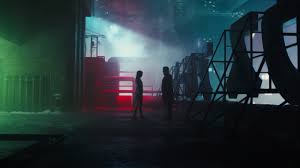Bollywood has been changing its style, which is known for the colorful musicals with dramatic narratives. And now, a new generation of filmmakers is picking up the neon noir baton a blend of classic noir subject matter with bright, neon-esque visuals and themes. This shift mirrors a more in-depth look at urban anxiety, the gray areas of morality and the layers within contemporary Indian society. (The 15 Best Neon-Noir Movies | Taste Of Cinema)
Understanding Neon Noir
Origins and Characteristics
Bollywood has been changing its style, which is known for the colorful musicals with dramatic narratives. And now, a new generation of filmmakers is picking up the neon noir baton a blend of classic noir subject matter with bright, neon-esque visuals and themes. This shift mirrors a more in-depth look at urban anxiety, the gray areas of morality and the layers within contemporary Indian society. (Exploring the Neon Noir Legacy of ‘Drive’ and ‘Thief’ – LunaNotes)
Visual and Thematic Elements
Key elements of neon noir include:
- High-contrast lighting with neon colors
- Urban landscapes, often at night
- Themes of isolation, corruption, and moral ambiguity
- Stylized cinematography and soundtracks
These components create a sensory experience that immerses viewers in a world where beauty and decay coexist.
The Emergence of Neon Noir in Bollywood
Historical Context
The Indian cinema has a lot to offer when it comes to noir films starting with its beginning in the ’50s. But the post-millennium neon noir aesthetic was only birthed around 2001, fed by the rest of the world’s cinematic output and India’s own urbanization. Movies began to go underground, demonstrating the more depraved elements of life in the city while using traditional narratives and experimental visual techniques. (Female Gangsters and Film Noir in Indian Popular Cinema, 4 Film Noir and the Dark Spaces of New Hindi Cinema)
Notable Examples
Several Bollywood films have embraced the neon noir aesthetic:
- Johnny Gaddaar (2007): A crime thriller that combines suspenseful storytelling with stylized visuals.
- Shaitan (2011): Explores the reckless lives of urban youth, using vibrant colors and a pulsating soundtrack.
- Monica, O My Darling (2022): A dark comedy that delves into corporate greed and deception, set against a neon-lit backdrop.
These films showcase how Bollywood is adapting the neon noir style to tell uniquely Indian stories.
Cultural Significance
Reflecting Urban Realities
The rise of neon noir in Bollywood mirrors the complexities of modern Indian cities—where rapid development often leads to moral and social dilemmas. Filmmakers use this aesthetic to comment on issues like corruption, alienation, and the duality of progress.
Challenging Traditional Narratives
By adopting neon noir, Bollywood challenges its own conventions. The genre’s morally ambiguous characters and bleak outcomes contrast with the industry’s typical emphasis on clear heroes and happy endings. This shift allows for more nuanced storytelling that resonates with contemporary audiences. (Female Gangsters and Film Noir in Indian Popular Cinema)
Visual Storytelling Techniques
Cinematography and Lighting
Neon noir relies heavily on visual storytelling. Cinematographers use neon lighting to create mood and highlight emotional states. The interplay of light and shadow enhances the sense of mystery and tension inherent in noir narratives . (What is the Neon Noir Genre? | No Film School)
Sound and Music
Soundtracks in neon noir films often feature electronic or jazz influences, complementing the futuristic and moody visuals. Music becomes a character in itself, guiding the audience through the emotional landscape of the story.
The Future of Neon Noir in Bollywood
As Indian society continues to evolve, so too will its cinema. The neon noir aesthetic offers filmmakers a versatile tool to explore contemporary issues with depth and style. With advancements in technology and a growing appetite for diverse narratives, Bollywood’s neon noir phase is poised for further innovation and global recognition. (Female Gangsters and Film Noir in Indian Popular Cinema)
The adoption of neon noir aesthetic by Bollywood confirms the iconoclastic digression to a virgin, cinematically uninitiated domain. By blending time-honoured storytelling with contemporary visual spectacle, Indian film-makers are creating stories that are rooted in culture, yet have universal appeal. Deepening as it matures, the genre project offers the prospect of a richer, more nuanced portrayal of India’s multi-hued society for a broader range of audiences.
Frequently Asked Questions (FAQ)
Q1: What defines the neon noir aesthetic in Bollywood films?
A1: Neon noir in Bollywood combines traditional noir themes such as crime, moral ambiguity, and complex characters with vibrant neon lighting and modern urban settings. (Neon Noir | Aesthetics Wiki – Fandom)
Q2: How does neon noir differ from classic film noir?
A2: While classic film noir is characterized by black-and-white visuals and post-war cynicism, neon noir incorporates color, especially neon hues, and often addresses contemporary societal issues.
Q3: Why is neon noir gaining popularity in Bollywood?
A3: The aesthetic allows filmmakers to explore modern urban challenges and moral complexities, resonating with audiences seeking more nuanced and visually engaging narratives.
Q4: Can you recommend some Bollywood neon noir films?
A4: Notable examples include Johnny Gaddaar, Shaitan, and Monica, O My Darling. (Category:Indian neo-noir films – Wikipedia)
Q5: What impact does neon noir have on storytelling in Indian cinema?
A5: Neon noir introduces a stylistic depth that enhances thematic exploration, allowing for more sophisticated and layered storytelling that reflects the complexities of contemporary Indian life.